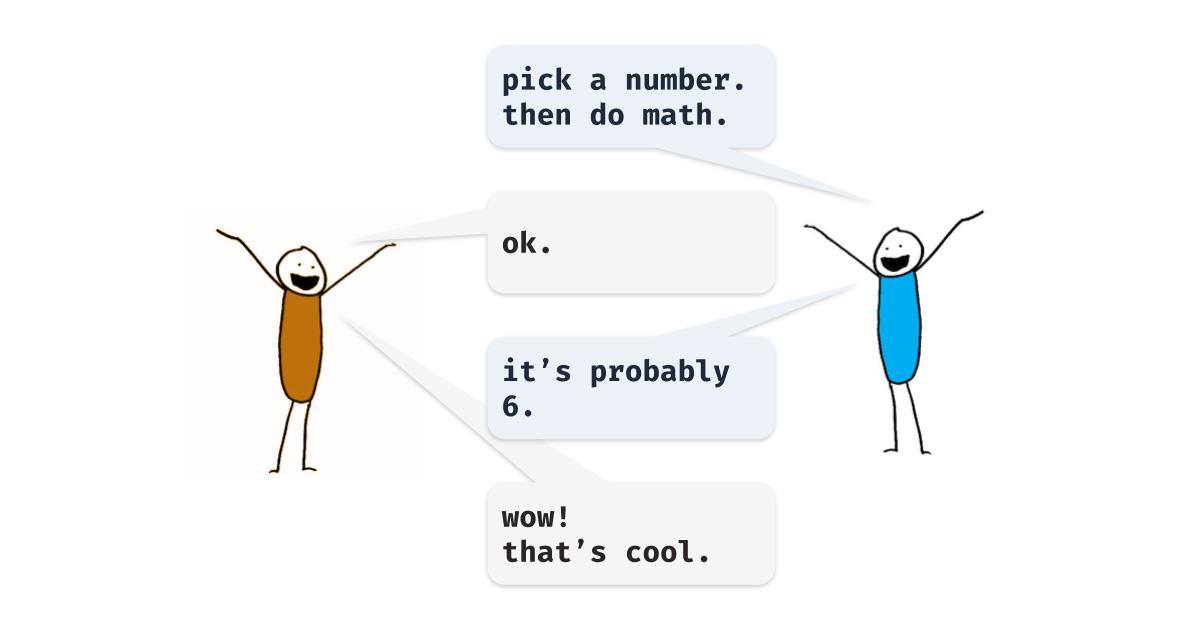Make People Think of Numbers
Force people to think of certain numbers with math tricks.

Did you know that using math we can force people to think of certain numbers? We can use 9, 1089, or any other number you can think of using the simple tricks described below.
The First Trick
The first trick you’ll learn can work for any set of two numbers, making it more versatile than using 9 or 1089. It’s also really simple to pull off.
Preparation
- Let be an integer ranging from 2 to 6. In examples, we’ll use 3.
- Let be an integer ranging from 3 to 5. In examples, we’ll use 4.
- Let be . In examples, we’ll use 12.
The Trick
- Ask each person in the audience to select a number between 1 and 100. Make sure they don’t tell it to you. In examples, we’ll use 7.
- Ask the audience to multiply their numbers by . We chose 7, so we now have .
- Ask them to add to their number. We used , so we now have .
- Ask them to divide their number by . For us, , so we now have .
- Ask each person to subtract their original number. We had , so we now have .
- Announce that you already knew their number! Say it was , which all the numbers will now be.
The Explanation
We’ll track a number as it progresses through the process, them simplify the final answer.
- Let be an integer.
- We multiply .
- We add .
- We divide .
- We subtract .
To simplify, we can remember that . Let’s substitute it to get .
We can factor out to get .
Because , we can simplify to .
Now we can finally simplify to , our final result!
Forcing 9
This method forces the number 9 on the audience.
- Ask each person to think of a six-digit number. For our example, we’ll use 173924.
- Ask each person to shuffle the digits in their number randomly, and to remember the result. (329471)
- Ask each person to take the difference between their larger number and their smaller one. (329471 - 173924 = 155547)
- Ask each person to add the digits in their number together, and to keep doing that until they have a one-digit number. (1+5+5+5+4+7 = 27, 2+7 = 9)
- Each member of the audience now has 9.
Forcing 1089
This method forces the number 1089 on the audience.
- Ask each person to think of a non-symmetrical three-digit number where the digits are decreasing. We’ll use as an example.
- Ask each person to reverse the digits in their number. We got .
- Ask each person to subtract their smaller number from the larger. We’ve got .
- Ask each person to reverse the new number. In our example, we have .
- Ask each person to add the two numbers together. We have .
- Every person should now have 1089, which we do!